1970 Opel GT - Flashback



















|

|

|

|

|

|

|

|

|
Opels are little known Down Under but back in 2009, we managed to unearth this unusual sporty example in Western Australia
From Unique Cars #297, Apr/May 2009
1970 Opel GT
The opal might be Australia’s national gemstone, and ‘The Opals’ our all-conquering women’s basketball team, but Opel cars are largely unknown here. This is surprising really, when many Holden models including Astra, Camira, Calibra, Gemini, Barina and Commodore have been very closely based on Opel products.
While the Opel name is hardly recognised in Australia, the company has a long and interesting history. Founded in Russelsheim, Germany in 1863 by Adam Opel, the company specialised in making sewing machines, then in 1886 ventured into bicycle manufacture. The following year saw production of the Opel-Lutzmann, and the making of the Lutzmann motorcar which was modelled on a Benz design. Sales were very slow, and in 1900 the agreement with Lutzmann finished and the Opel company began selling French Darracq cars in Germany.
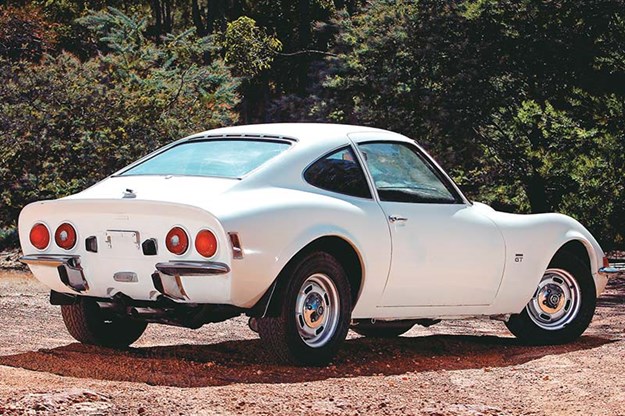
Opel GT was Germany’s answer to the Corvette. Styling (above) borrows from a variety of sources including the legendary American sports car
Soon Opel began fitting its own bodies to Darracqs and marketing the cars as Opel-Darracqs, but it wasn’t until 1907 that Opel produced a car of its own design.
In 1924 it introduced a new small car built on the company’s new mass production lines. The 4PS (four horsepower) was made in bright green and dubbed "Laubfrosch", or tree frog. Controversially, it very closely mirrored Citroen’s design of the 5CV, and Citroen succeeded with legal action against Opel for copying its design.
| Flashback: 1936 Opel Olympia
By the late 1920s Opel had a range of models and had become not only Germany’s largest car maker, but also a producer of more bicycles than any other German firm.
In January, 1929 the Opel family sold 80 percent of its holdings to America’s General Motors organisation, and the balance changed hands in 1931. The Opel family immediately became amongst Europe’s wealthiest, collecting a staggering US$66.7 million from the sale.

Performance from 1.9-litre four was adequate although it looks faster than it is!
By the late-’30s the Nazi party’s control of Germany was making things difficult for the American-owned business, and eventually GM relinquished Opel to the government. Potentially a vast sum of money down the drain, luckily for GM, after the war Opel was taken over by the US military administration. In the meantime, the Russians had made off with the dies for the Opel Kadett and began making them as Moskvitches!
Postwar Opel developed a range of models and in 1962 re-issued the Kadett name for a new small car, which was similar to Australia’s original Holden HB Torana (itself a Vauxhall design from GM’s British arm).
Various models were spun off the Kadett, including the innovative GT sports car which is featured here.

Catwalk model
For the most part, up until the late-’60s Opels had been pretty staid, conservative designs, which made them popular but not terribly desirable to enthusiasts.
The novel GT came about following a 1965 show car styling exercise, and was clearly inspired by the successful Corvette made by its American parents. Not surprisingly, the Opel GT launched in 1968, was an instant hit. Brissonneau & Lotz in France was contracted to produce the steel bodywork for the GT, and its sleek, swoopy styling deftly hid the mainstream mechanical components from other Opel models.
Two engines were available – the little 1078cc four-pot from the Kadett or, more suitably, the 1900cc engine later fitted to the Holden Sunbird. Needless to say almost all buyers opted for the bigger four-cylinder engine.
Almost 104,000 Opel GTs were built, with the vast majority (70,000) selling in the US, where it was viewed very much as a mini-Corvette.
The car Unique Cars tracked down in Western Australia is one of just a handful to have made it to our shores. Opels have never been marketed in Australia but some have been privately imported here over the decades.
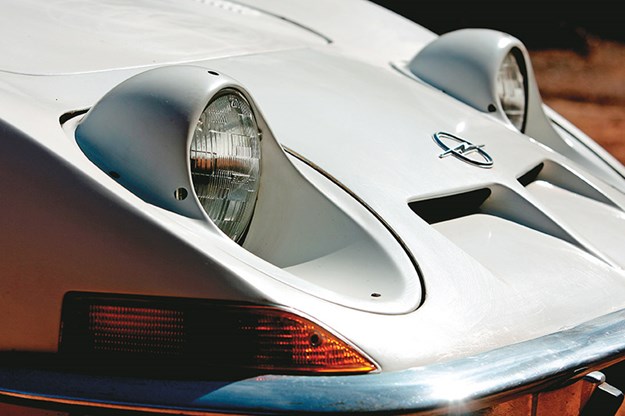
This 1.9-litre GT was sold new in the US and had sat in storage in Nevada since 1984 before an Australian buyer rescued it and brought the car to Perth in 2000.
Fortunately it’s a 1970 model, because by 1972 restrictive US emission control regulations meant that GTs delivered from then on were fitted with a 62kW motor offering significantly reduced performance.
Not that the GT was a powerhouse like its American cousin the Corvette. With 76kW it cruised from zero to 100km/h in 11.5 seconds and had a top speed of 185km/h – OK for the time but nothing to get too excited about.
The car’s next owner was a well-known collector who bought it at a Wemyss collectors’ car auction and intended to give it a full restoration. But after sitting patiently among his Studebakers, Bentleys, Mercedes-Benzes and other cars, awaiting a full rebuild, the owner died and the GT passed to a friend of his, Neil McLean.
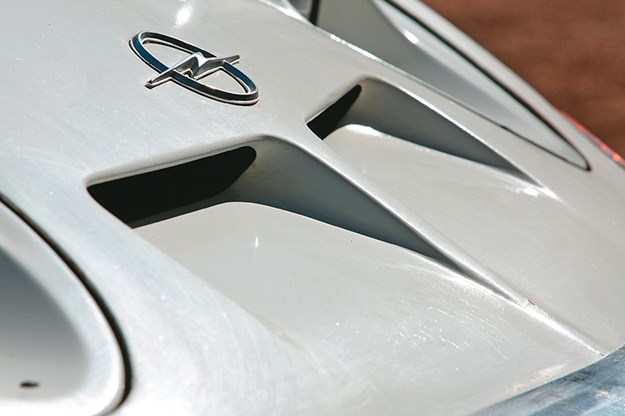
"I’d always liked the Opel and remember seeing them in Europe when they were new," explains Neil. "The previous owner knew I fancied it. After he passed away his wife was kind enough to ensure I became the next owner, before anyone else grabbed it." After several more years of sitting, getting little use and waiting for some attention, Neil has decided it’s time to move the little GT on too.
"It’s a lovely little thing and I really hope that someone will be able to appreciate and make use of it. I simply haven’t had the time to use the car or give it the attention it deserves," he laments.
Getting acquainted
Before hopping in for a spin, I take the opportunity to look over this rarely seen in Australia, two-seat sports car. The first thing that grabs you is the very late-’60s aerodynamic shape; it’s got a classic balance to it – sharp nose and Kamm tail. The rounded side window treatment is reminiscent of a Porsche 911, while the quad tail-lights are Italianette.
There’s a pleasing voluptuousness to the shape as it flows over the wheelarches into the smoothly rounded sides, and it’s easy to see why people were attracted to the GT.
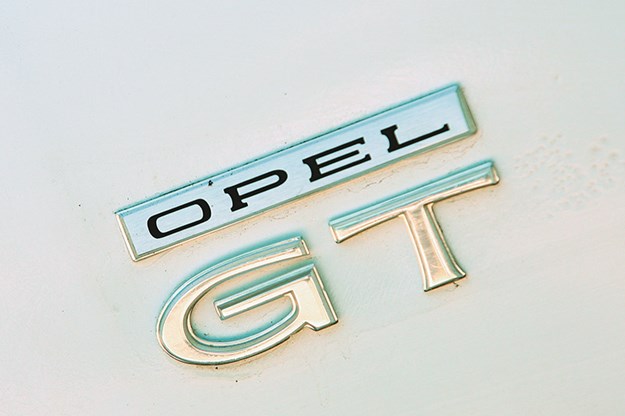
Claustrophobes should keep out of the interior though. The all black cabin, whilst typical of the era doesn’t create a feel of spaciousness. The slim pillars allow good visibility ahead, while some of the sculptured front end styling can also be appreciated in the view forward.
Once ensconced in the comfortable seat, the driving position feels pretty much right. All the controls are easy to reach and even tall drivers would have no issues. The pedals are skewed slightly to the left (remembering it’s a left-hand-drive car), but that’s no hindrance.
The dashboard has an appropriately sporty look, with two large instruments ahead of the driver and smaller gauges and switches in the centre. The deep-dish steering wheel has attractive polished alloy spokes.
One of the novelties is the crank handle necessary to operate the retractable headlights – that’s right, they rely on human power to flip open. Even that’s unusual in operation as the headlight pods rotate on the axis of the length of the car. Many owners choose to leave the lights up, and much of the early Opel publicity material shows them in the open position.
Interestingly, the small luggage area is only accessible via the doors and through the interior. Although, in its defence, Corvettes had the same lack of a boot lid for many years.

All-black cabin is tight, although visibility from driver’s seat is good
The engine sits well back behind the front axle line, which helps give the car a nicely balanced feel on the road. Front suspension uses A-arms and a transverse leaf spring, while the rear has a live axle with coil springs.
Given that the GT uses the floorpan of a cheap early-’60s sedan, the handling is quite respectable, no doubt helped by the wider track and tyres.
Brakes are disc front, drum rear and even in this rarely-used car perform adequately.
The car cruises along nicely, but by today’s standards performance is nothing special, although it’s comparable to many similar four-cylinder sporty models of the late-’60s.
Our drive included some dirt roads – not quite what the Opel was designed for – which showed up the basic suspension layout and old fashioned handling characteristics.
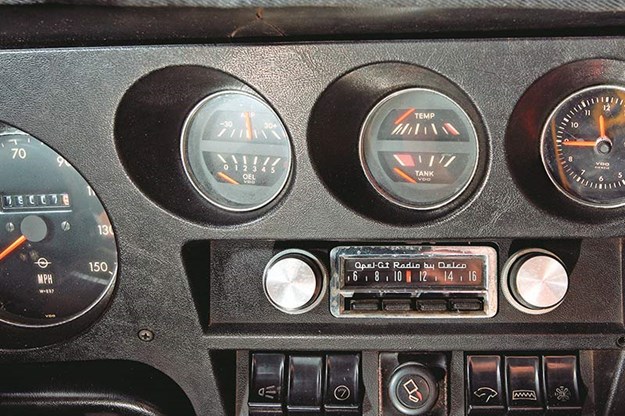
Produced for just six years, the GT was an unqualified success. As a coupe with great emphasis on styling, but with mundane mechanicals, its competition included the Type 3 Karmann Ghia (more expensive, slower, 42,500 made), the unusual mid-engined Matra 530 (9600 built), Volvo P1800 (39,400) plus a plethora of fibreglass bodied British creations.
But with more than 100,000 built, the good-looking Opel outgunned them all.
Hidden Opels
From the 1970s, Opels were assembled in Australia or imported fitted with Holden badges, including the Ascona (Camira), Kadett (Gemini), Corsa (Barina) and Astra (apparently no name change was needed to Australianise Astras!).
And of course all models of Commodore bar the current shape have been based on Opel designs, but each had more changes than the smaller cars.
Incidentally, the first Daewoo cars marketed here were based on old Opel Kadetts, rebadged and built in South Korea.

The Opel GT name was revived in 2007 for a two-seat roadster, powered by a 193kW, 2.0-litre turbo engine. Based on the same platform as the Pontiac Solstice and Saturn Sky, it's sold in Europe.
1970 Opel GT specs
Body: Two-door coupe
Weight: 940kg
Engine: 1.9-litre four-cylinder
Power/Torque: 76kW/146Nm
Transmission: Four-speed manual
Brakes: Front discs, rear drums
Performance: 0-100km/h – 11.5 secs
Top speed: 185km/h
Unique Cars magazine Value Guides
Sell your car for free right here
Get your monthly fix of news, reviews and stories on the greatest cars and minds in the automotive world.
Subscribe

.jpg)









.png)



